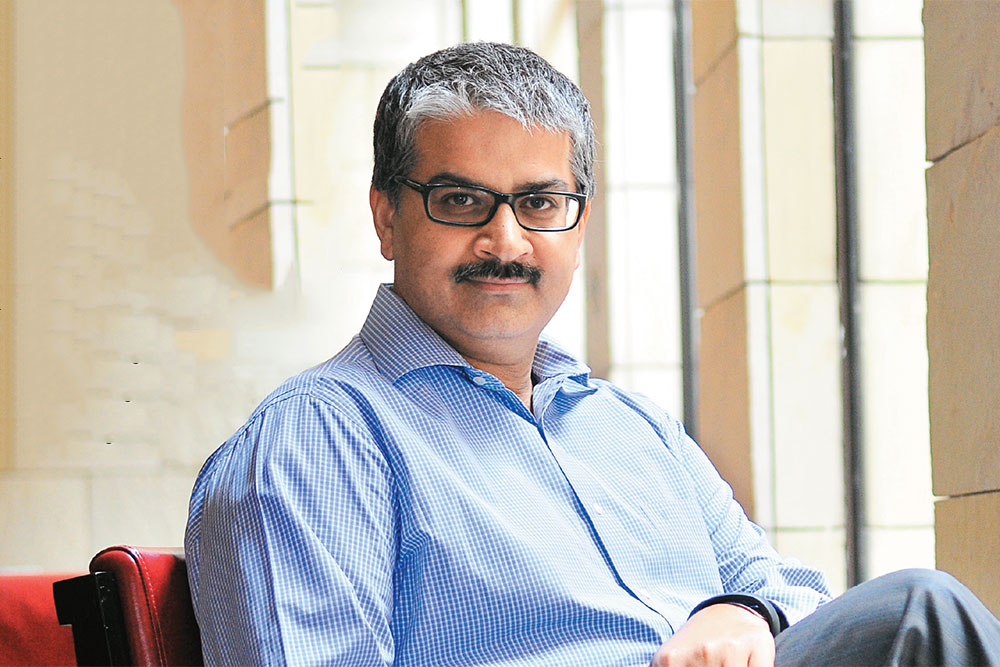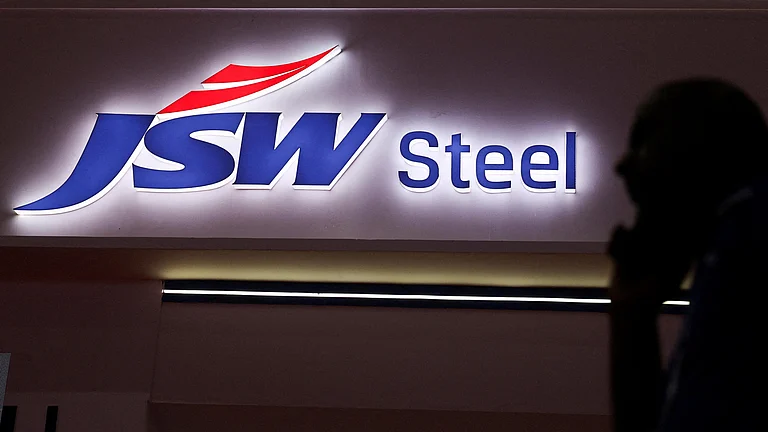Warren Buffett is a great role model for value investors everywhere. I, however, have been asked to write on just one lesson from Buffett that would particularly apply to investors — both local as well as foreign — in Indian stocks. Having practised value investing in India for the last 19 years, and taught it for the last 12, I came up with this.
Pay up for quality
Flashback to March 1992. Harshad Mehta has lifted Indian markets to stratospheric levels and a company called Nestlé India is selling at a P/E multiple of 68 and 9 times book value. Crazy expensive, no? Now, imagine you had bought it at that crazy price level and held it till now. How much money you would have made? My workings show that you’d have earned 20% a year. Indeed, you would have done very well over the long term by buying that stock at virtually any price level and then never selling a share (see: Nestlé India: Buy and hold returns).
The reason for this astonishing performance is not hard to work out. The stock currently sells at a P/E of 45; so for the investor who bought it in 1992 at P/E of 68, the return did not come from multiple expansion. Instead, it must have come from earnings growth and indeed it did. In FY92, Nestlé India had revenues of about ₹500 crore and profit after tax of ₹23 crore. For FY11, the revenues had soared to ₹7,500 crore and profit after tax to ₹961 crore.
Did the fellow who paid 68 times earnings for Nestlé India in 1992 overpay? If he had, his long-term return should have been poor, right? But that didn’t happen. It didn’t happen because even at a P/E of 68, the growing earnings stream the company would deliver over the next two decades was not being fully factored in that “crazy” price. So, perhaps the fellow who bought it at that price was not that crazy after all.
It seems to me that Indian stock markets have systematically undervalued Nestlé India by ignoring its long-term growth potential. But, you ask, how much more can Nestlé India grow? I will let you dwell on this by providing you with a few data points.
Nestlé has been in India for 102 years and has grown along with the growth in the Indian economy. Indeed, over the last 30 years, Nestlé India’s revenues grew by a factor of 233 times. And yet, its current annual revenues constitute only about 2% of it’s global parent’s revenues despite the fact that Indians constitute 18% of the world’s population. So, I would argue, that Nestlé India is nowhere near saturation point. Nor is Indian consumer spending. Indeed, we may be at a tipping point here (see: Consumer spending in India). With annual consumer spending rising to $3.5 trillion in another seven years, plus their low penetration rates, consumer franchise businesses like Nestlé have a long way to go before they saturate the Indian markets.
The likely explosion in spending is, in my view, a key reason why Unilever recently made a tender offer to increase its stake in its local Indian subsidiary at a P/E multiple of 34. This is a very significant development because for the first time, instead of taking money out of India, Unilever is putting money into it. Unilever is paying up for quality.
Beating the foreign parent
Paying up for quality has served long-term investors in Indian consumer franchise businesses. Indeed, even global investors who had a choice of investing in global consumer franchise businesses as well as their Indian subsidiaries, would have been better off owning the Indian subs (see: Global parent vs Indian subsidiary). When I presented these charts to a global investor audience in the US recently, the response was: “But these returns are not comparable as the parent company returns are in dollars while those of the Indian subsidiaries are in rupees.” Fair enough. So, I presented them with comparable dollar returns (see: Comparative dollar returns), which prove that despite the currency risk, global investors would have been far better off owning the Indian subs instead of owning their global parents.
Was this outperformance the result of relatively lower P/E multiples for local subs at the time of buying? As it turns out, the answer is “no” (see: P/E multiples).The Indian subs have almost always sold at higher P/E multiples than those commanded by their global parents. And yet, despite being relatively “expensive”, and despite the currency risk, global investors would have fared better by investing in the Indian subs. The reason? India offers high-quality, long-term growth like no other country. Moreover, we are nowhere near saturation. A recent study done by Boston Consulting Group showed that over their lives, Indians born in 2009 will consume 13 times as much as those born in 1960.
What about Indian brands?
You might think, why am I only writing about global MNC companies? To counter that challenge, I will now talk about two local companies — Asian Paints and Pidilite. I picked these two companies for a reason, which is that both these companies have used superb advertising and marketing strategies to create iconic brands out of products that are largely sold as commodities in most of the developed world. Such successful branding has given these companies strong competitive advantages, which has enabled them to produce exceptional fundamental and stock market performance.
The Asian Paints stock has almost always sold at a premium valuation. And yet, the person who paid up for quality and bought the stock at 20 times earnings in 2002 did very well. So did the investor who bought the stock at 26 times earnings in 2007. The company had a market cap of only $430 million in March 2002. Five years later it was $1.7 billion and another five years later it had soared to $6.1 billion (see: Asian Paints financial highlights). No new shares were issued by the company during this period.
At present, the company’s market cap is $8.3 billion, making this stock a 20-bagger in about a decade. Paying up for quality has worked out very well for the long-term owners of Asian Paints — it is a stock that has hugely outperformed its global peers (see: Asian Paints vs global peers).
Now, let’s take a look at Pidilite (see: Pidilite Industries financial highlights). The fellow who paid nine times earnings for this stock in March 2002 did very well over the next five years as the market cap soared from $92 million to $656 million. Then, it trebled over the next five years to $1.8 billion, so the guy (or gal) who bought it an “expensive” looking P/E of 26 in March 2007 did quite well too. The number of shares in issue during this period did not change by much, so almost all of the rise in market cap was due to stock price appreciation.
Paying up for quality paid off very well for Pidilite’s long-term investors. Its current market cap now stands at $2.4 billion, making this a 26-bagger in about a decade. Even over the last five years, while markets were flat, the stock did very well indeed.
The reasons why long-term owners of Asian Paints and Pidilite have done very well are the same reasons that explain why long-term owners of the four companies I cited have done very well: India offers high-quality growth and markets have systematically undervalued that growth potential.
A lesson in value investing
Naïve value investors fuss over buying below liquidation values or paying very low P/E multiples. Paying double digit P/E multiples is a big no-no. In other words, they find it difficult to pay up for quality. Big Mistake, my friend.
Warren Buffett figured this out years ago when he moved away from buying “cigar butts” — those statistically “cheap” stocks. “A cigar butt found on the street that has only one puff left in it may not offer much of a smoke,” he wrote, “but the “bargain purchase” will make that puff all profit.” Instead, over the years Buffett moved towards buying high-quality businesses and did not hesitate to pay up for quality time and again and again.
In 1992, he offered a lesson from his own experience. “The term ‘value investing’ is widely used to imply the purchase of stocks having attributes such as a low ratio of price to book value, a low price-earnings ratio, or a high dividend yield. Unfortunately, such characteristics...are far from determinative as to whether an investor is indeed buying something for what it is worth and is therefore truly operating on the principle of obtaining value in his investments. Correspondingly, opposite characteristics — a high ratio of price to book value, a high price-earnings ratio, and a low dividend yield — are in no way inconsistent with a ‘value’ purchase.” And his partner Charlie Munger once said: “If a business earns 18% on capital over 20 or 30 years, even if you pay an expensive looking price, you’ll end up with one hell of a result.”
Those two thoughts and the illustrative examples I gave earlier will hopefully convince you about the idea of paying up for quality. You see, “paying up” is not the same as “over-paying.” If people over-pay for assets, their long-term returns will be poor. If that doesn’t happen, and if the fundamental performance of the underlying asset justifies its subsequent upward re-rating, the idea of paying up for quality, as Buffett figured out, makes great economic sense.
Regardless of which political party is in power, whether we get more or less inflation, whether interest rates rise or fall or whether the rupee rises or falls, India has a class of high-quality businesses that, given the demographic position the country is in, will continue to prosper. These businesses, regardless of the growth they have delivered over the last few decades, are still nowhere near saturation. Paying up for these quality businesses, but not overpaying for them, should work out very well for long-term value investors. So, please stop associating value investing with low P/E multiples. Just like Buffett did.











